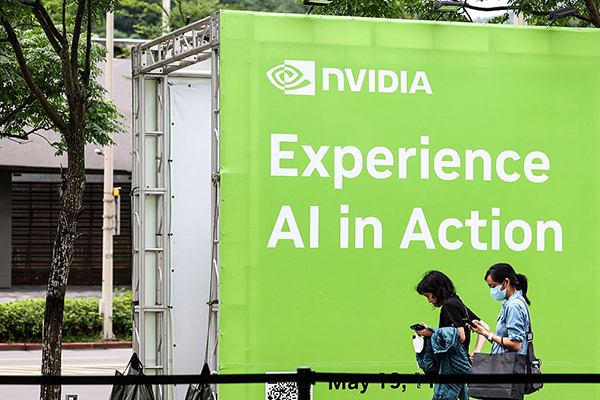Nvidia results preview: how much bad news is in the price?
On more than one occasion the AI chip giant has suffered a wobble, but it’s bounced back each time. Graeme Evans looks ahead to imminent quarterly results.
27th May 2025 15:40
by Graeme Evans from interactive investor

The re-acceleration potential of NVIDIA Corp (NASDAQ:NVDA) has been highlighted by a Wall Street bank after it said that headwinds in tomorrow night’s quarterly results are “well telegraphed”.
On the eve of first-quarter figures to the end of April, Morgan Stanley reiterated a 20%-plus upside for shares to $160 as its top pick in the semiconductor sector.
- Invest with ii: Most-traded US Stocks | Buying US Shares in UK ISA | Cashback Offers
Having initially been one of the worst-hit stocks of the Trump administration, Nvidia is back near where it started the year for a $3.3 trillion (£2.4 trillion) valuation second only to Microsoft Corp (NASDAQ:MSFT).
That follows a 40% recovery from the post-tariff lows seen in April, albeit a performance that has kept the Magnificent Seven stock within the range it has traded for over a year.
That’s in contrast to the upward momentum of the two previous years, when Nvidia delivered several shock-and-awe quarters of forecast-beating results.

Source: TradingView. Past performance is not a guide to future performance.
The build-up to this quarter’s set of results has been dominated by White House restrictions on H20 chip exports to China, which prompted Nvidia to announce the largest inventory writedown in the history of the semiconductor industry at $5.5 billion.
Morgan Stanley responded by cutting estimates for the April quarter to $42.2 billion, which is based on an expected £1 billion hit from 23 days of lost H20 revenue.
The bank forecasts about $4-5 billion of lost revenue in the July quarter, leading to a new estimate of $43.5 billion.
- The pros give their take on whether AI stocks are back in the game
- Ian Cowie: tariff truce boosts technology investment trust duo
- Trading Strategies: why stock market gains could be ahead
It believes that the impact of the H20 ban in the current quarter is not fully modelled by Wall Street, a “stale” consensus that poses a downside risk ahead of Wednesday’s results.
The bank warns that Nvidia’s recently launched Blackwell platform, which unlocks generative AI for the likes of Microsoft, Meta Platforms Inc Class A (NASDAQ:META) and other firms building AI data centres, won’t be able to take up the slack.
It said: “There is simply no offset to this. Blackwell demand is very strong but they are supply constrained, and lost H20 does not result in more Blackwell supply.”
The bank is looking to management to make a convincing case on the earnings call that supply conditions are improving and that there is the prospect of a second-half acceleration.
It adds that its $43.5 billion second-quarter revenue estimate indicates a “remarkable” $6.5 billion of sequential growth, when the impact of H20 is ironed out across both quarters.
- Stockwatch: is this the next cheap share to be taken over?
- Listen to our podcast: where next for tech shares following the tariff turmoil?
- Sign up to our free newsletter for investment ideas, latest news and award-winning analysis
Maintaining its top pick stance on the stock, the bank concluded: “Near-term issues are well telegraphed, and the path to a second-half re-acceleration is clear.”
The group recorded full-year revenue of $130.5 billion in the 2025 financial year. It powers all the 30 top autonomous vehicle data centres, while more than 40,000 companies use its technology to power AI factories.
UBS Global Wealth Management told clients this month that it believes the risk-reward in global tech remains attractive and that investors should continue to position for an ongoing recovery in quality AI names globally.
It said company and survey data continued to point to strong AI demand, with Taiwan Semiconductor Manufacturing Co Ltd ADR (NYSE:TSM) reporting April revenue 48% higher than a year ago.
These articles are provided for information purposes only. Occasionally, an opinion about whether to buy or sell a specific investment may be provided by third parties. The content is not intended to be a personal recommendation to buy or sell any financial instrument or product, or to adopt any investment strategy as it is not provided based on an assessment of your investing knowledge and experience, your financial situation or your investment objectives. The value of your investments, and the income derived from them, may go down as well as up. You may not get back all the money that you invest. The investments referred to in this article may not be suitable for all investors, and if in doubt, an investor should seek advice from a qualified investment adviser.
Full performance can be found on the company or index summary page on the interactive investor website. Simply click on the company's or index name highlighted in the article.